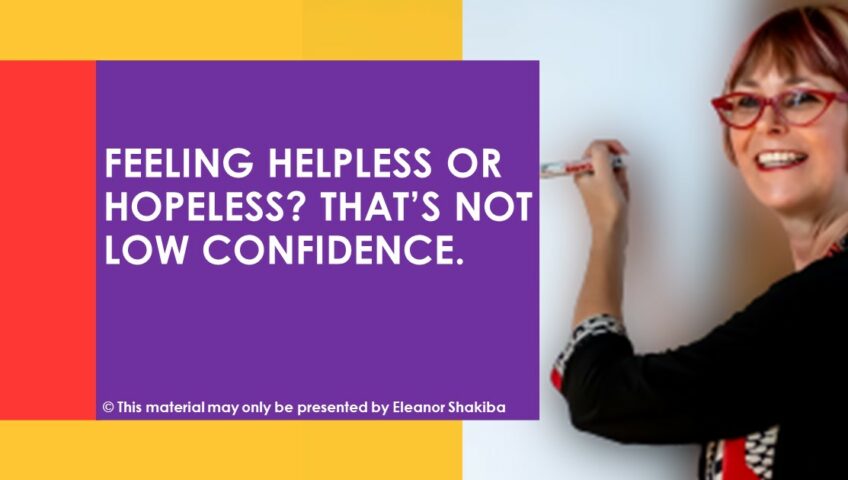Recently, I ran a free confidence bootcamp. It was full of people who said, “I’m normally a confident person. But recently, I’ve had too many disasters and challenges to deal with. It seems like nothing I do makes a difference. I’ve just stopped trying”.
That’s not low confidence. It’s learned helplessness, which psychologists define as a mental state experienced after “enduring repeated aversive stimuli beyond their control”. Of course, you’re more likely to experience learned helplessness when you have low levels of control, autonomy and choice. For example, research has shown that command-and-control business cultures trigger learned helplessness in employees.
So, what can we learn from this? For a start, it’s important to know the difference between learned helplessness and low confidence. If your brain has gone into helpless, hapless and hopeless mode (my label for learned helplessness), do something about it.
A great way to start is by priming your mind for action with neurolinguistic programming (NLP). That’s because the fastest way to shift out of learned helplessness is by boosting your self-efficacy (otherwise known as personal power) and doing something to address your situation.
